The new Chronoswiss Strike Two Terra and Strike Two Highland Regulators
Chronoswiss reinterprets the classic regulator with a horizontal layout, bold colours and a dash of hand-guilloché.

Chronoswiss, founded in 1983 in Munich by the late Gerd Lang, acquired renown for the celebrated watchmaker’s regulator models and distinctive design language. Now in the hands of Oliver Ebstein, with headquarters in Lucerne, the brand’s traditional regulators have been given a 21st-century visual punch and reinterpreted with vivid colours and textures. Pushing the envelope, Chronoswiss breathed new life into its classic regulator display by deconstructing it and reassembling it horizontally to produce the visually arresting Strike Two Series introduced earlier this year. The collection welcomes two new dial colours: the Strike Two Terra and Strike Two Highland.
Regulator clocks, distinguished by their separation of minutes, hours and seconds, were developed in the mid-18th century as master clocks to offer the most accurate time readings of the day. The minutes were the protagonists of the dial read with a large sweep hand, while the hours and seconds were usually relegated to smaller sub-dials, with all three hands working off different mechanisms.
Instead of the more conventional regulator configuration with hours and seconds stacked vertically in the centre, Chronoswiss alters the layout by arranging the hours and small seconds horizontally across the dial. Naturally, the minutes maintain their key position on the flange and are indicated by small black dots with white luminous dots at 5-minute intervals.
The Strike Two Terra has a brown PVD-coated dial with a cracked textured surface to suggest the earth, while the green CVD-coated vertically brushed dial of the Highland evokes the colours of Scotland’s Highlands. The Roman hour numerals are printed on a silver ring with an openworked central area revealing the gearwork and two vertical bridges (although the name Strike Two might suggest the presence of a chiming mechanism, it refers to the twin bridges exposed beneath the hours ring). Chronoswiss is also famous for its implementation of traditional decorative techniques, and the small seconds sub-dial on the left has a hand-guilloché interior. The hour and minute hands are filled with luminescent material and are blued on the Terra dial and golden on the Highland version.
The 17-part stainless steel case features the signature fluting below the bezel and on the caseback. Measuring 40mm across with a height of 12.7mm, the case reveals some design tweaks like the hollowed lugs with sandblasted interiors and the revamped crown. The classic onion-shaped crown is still large but has a less pronounced profile and features a recessed band in the middle.
The Chronoswiss Strike Two Series is driven by the automatic calibre C.6000, developed in collaboration with La Joux-Perret. This movement, visible through a sapphire caseback, has a contemporary ruthenium-coated finish and an openworked tungsten rotor, revealing the radial Côtes de Genève decoration on the bridges. Beating at 28,800vph, the calibre delivers a 55-hour power reserve.
The Strike Two Terra and Strike Two Highland are fitted with calfskin leather straps with an embossed crocodile pattern. Both references are limited editions of 100 pieces and retail for CHF 9,800. For more information, please consult chronoswiss.com.

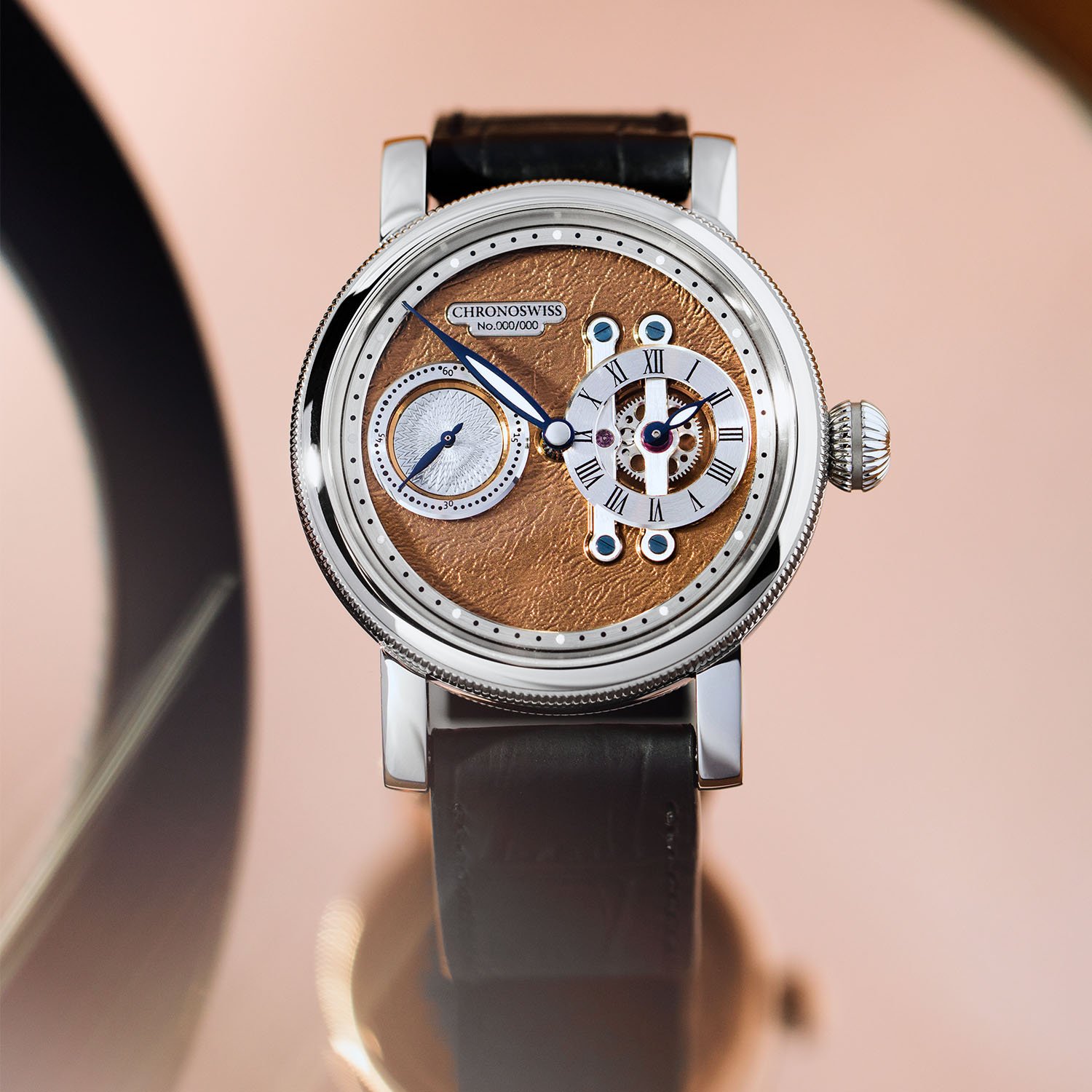
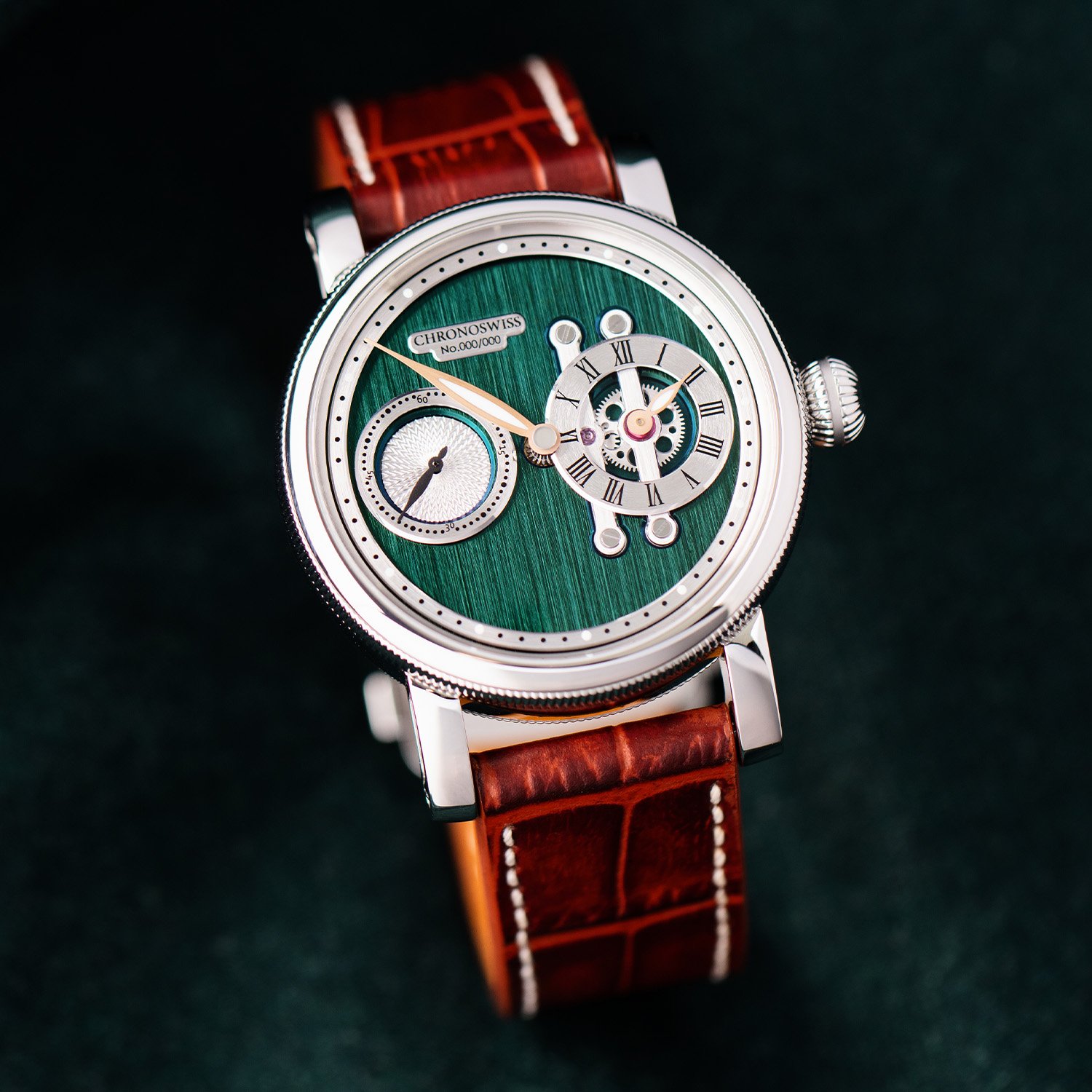
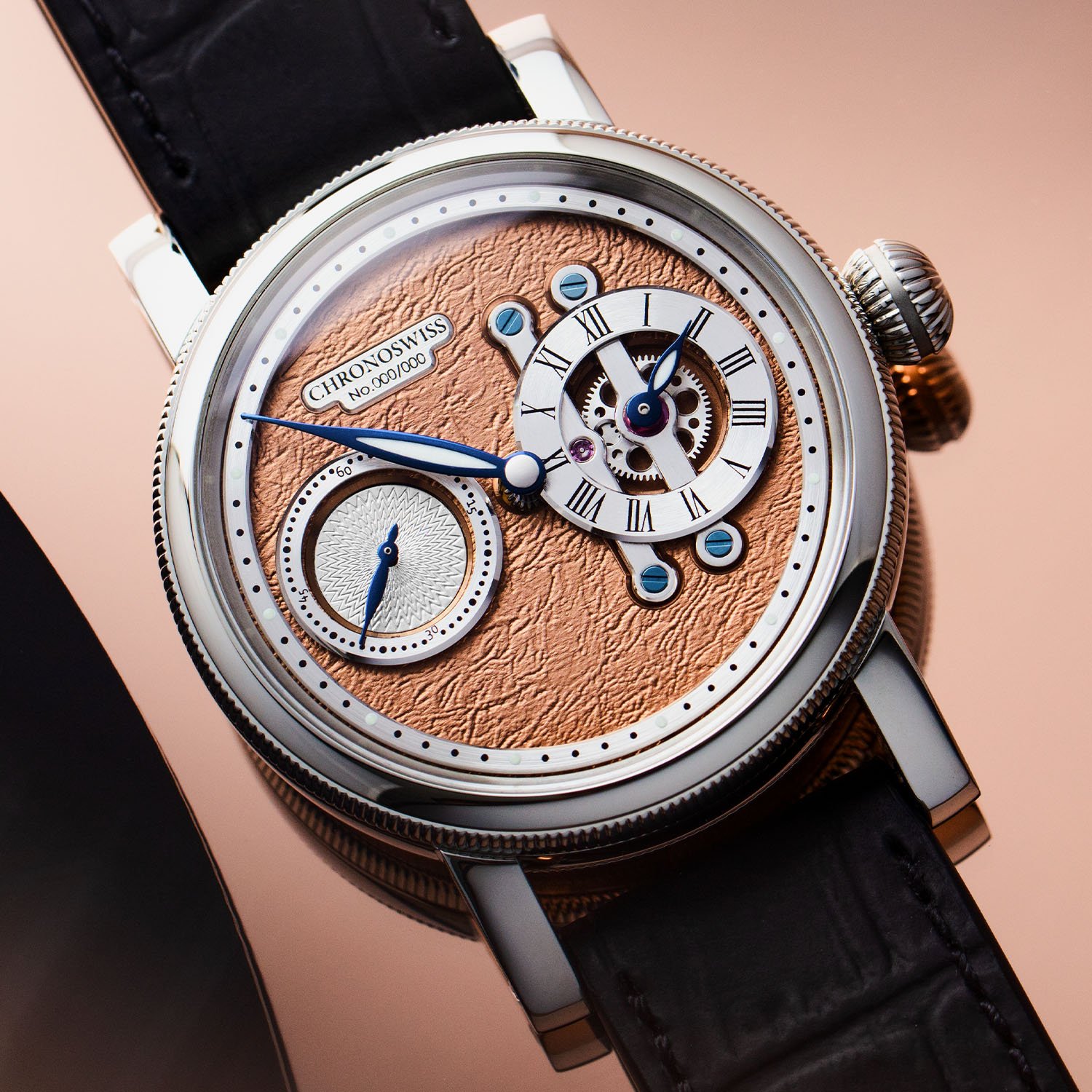
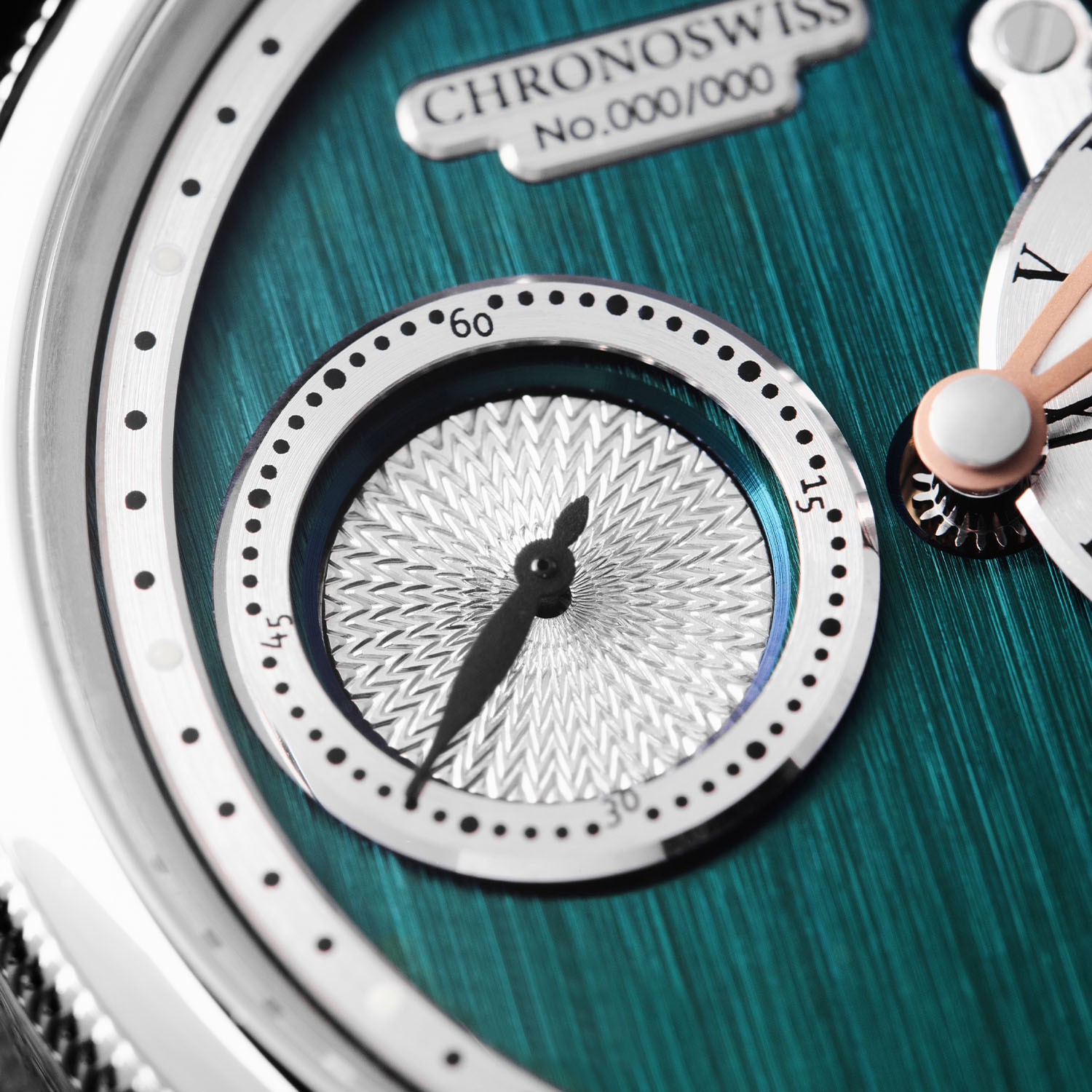

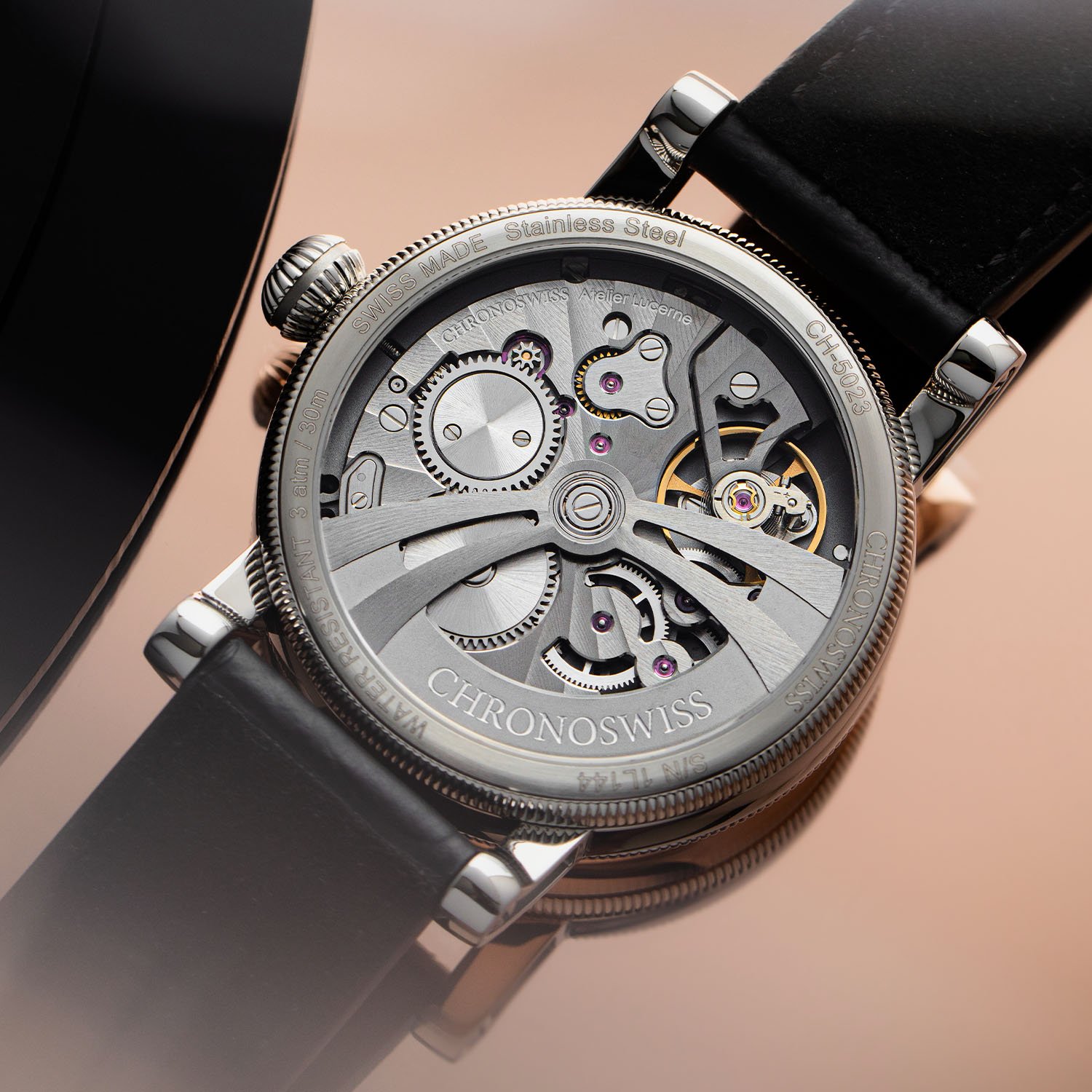
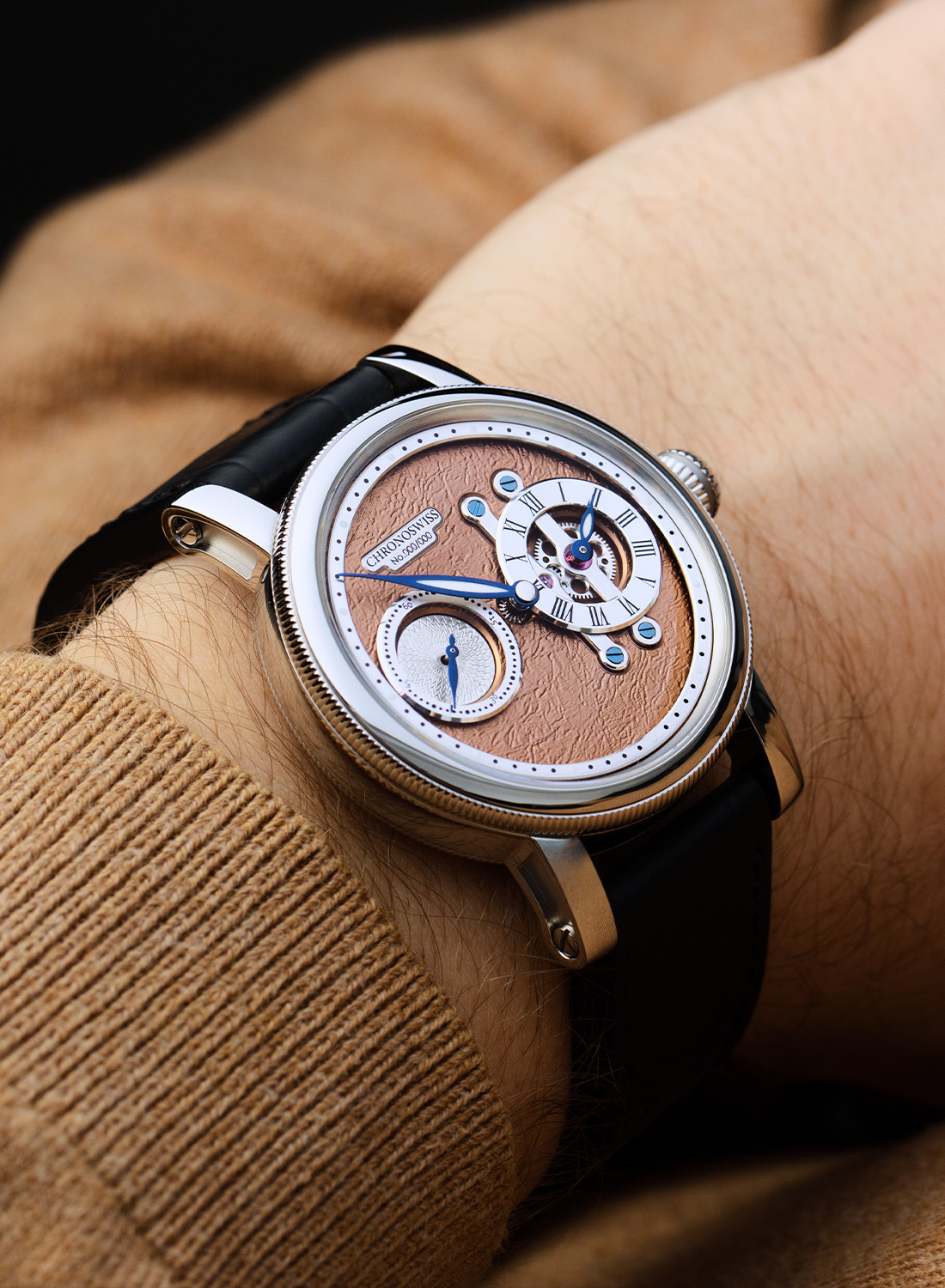
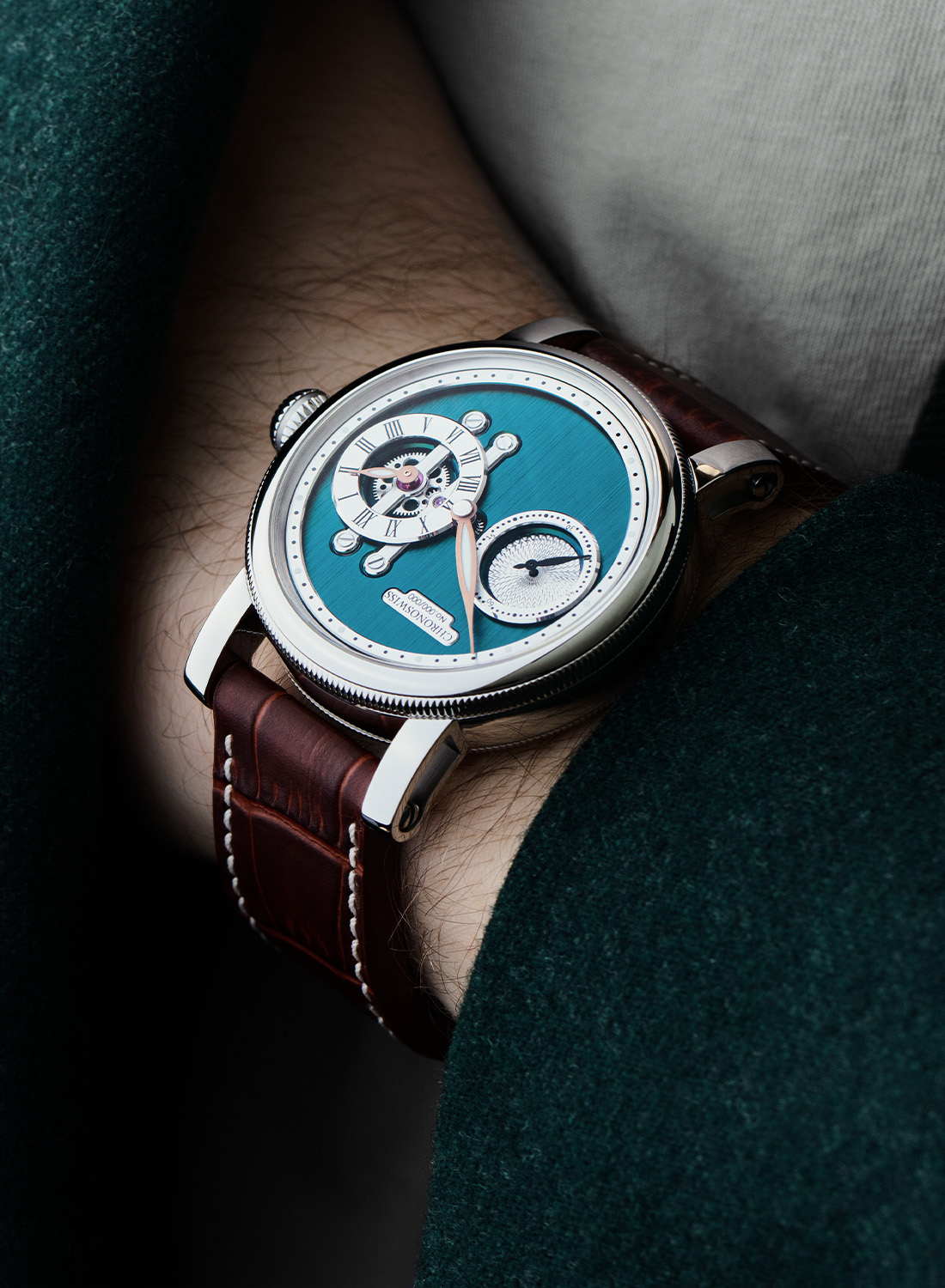



2 responses
I get Ketelaars vibes.
Dial maybe inspired by Kudoke, movement identical to MM1, used by Mauron Musy? Well done, as it fills the case nearly complete!